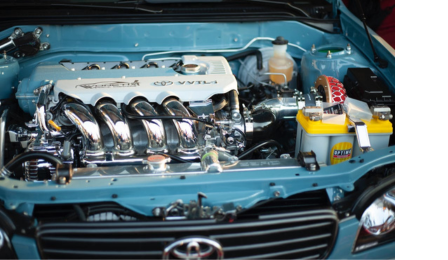Vital Factors To Consider for Making Certain High Quality and Durability in Utilized Engines
When taking into consideration the acquisition of a made use of engine, guaranteeing its quality and longevity requires a multifaceted method. Upkeep history is an essential variable, as it gives understanding into the engine's past treatment and potential future dependability. Beyond documents, a detailed evaluation of physical elements-- such as belts, hoses, and seals-- can expose covert issues. Performance screening is additionally vital, offering a picture of the engine's functional efficiency. Nevertheless, recognizing the subtleties of these assessments and their effects can be complicated. What are the essential approaches that can be employed to browse this detailed evaluation process successfully?
Engine History Evaluation
In the world of utilized engines, a detailed engine background analysis is vital to guaranteeing top quality and integrity. Recognizing an engine's past can provide important insights into its performance capacities and possible future longevity. A thorough background testimonial includes a number of key elements that play a considerable function in assessing an engine's problem. Upkeep documents are crucial. Normal upkeep, consisting of oil modifications, filter replacements, and arranged tune-ups, show that the engine has actually been well-cared-for, minimizing the likelihood of unpredicted failings.
Additionally, examining any history of repairs or substitutes is important. Engines that have undergone significant repair work might have underlying problems that might resurface. Understanding the context of such repair work, whether as a result of making defects or proprietor carelessness, is essential in creating a comprehensive analysis. Moreover, examining the engine's mileage can work as an indicator of deterioration. Lower mileage engines are normally better, but it is also vital to think about exactly how those miles were gathered. An engine used mostly for long-distance freeway driving may remain in far better condition than one subjected to regular stop-and-go city web traffic.
Basically, an exhaustive investigation right into an engine's history is vital for making educated investing in decisions. used engines for sale.
Comprehensive Evaluation Guide
While recognizing an engine's background provides valuable context, a detailed inspection is the next step to ensure its present problem aligns with historical information. The assessment ought to begin with an aesthetic analysis, inspecting for indications of leakages, rust, and unusual wear. Evaluate the exterior for oil stains or coolant marks, which might indicate underlying issues.
Next, evaluate the engine's mounting system for any kind of loose screws or abnormalities that can impact efficiency. Pay very close attention to the problem of belts and pipes, as these elements are important for optimal engine functionality. Take a look at for fractures, fraying, or any indications of degeneration.

Determining Wear and Tear
Identifying indications of wear and tear is important for evaluating an utilized engine's longevity and reliability. It includes a meticulous examination of various engine parts to establish their existing state and prospective future efficiency.
Another critical facet is inspecting the engine's seals and official website gaskets. These components are crucial for maintaining proper pressure and avoiding liquid leaks. Evidence of oil leakages or worn gaskets commonly suggests degeneration, potentially bring about a lot more severe concerns if not resolved immediately. Additionally, uncommon noises throughout engine operation, such as knocking or ticking sounds, may suggest inner damages or excessive endure moving parts like pistons or bearings.
The problem of belts and pipes is similarly vital, as they play a vital duty in the engine's overall feature. Broken or frayed belts and brittle hoses are signs old that could cause engine failing if overlooked. Finally, checking out the oil condition and filter can give insights right into previous upkeep practices, as unclean oil or stopped up filters suggest disregard and increased wear.
Efficiency Testing Basics
Assessing the wear and tear of engine parts establishes the stage for a thorough evaluation through efficiency testing. Efficiency testing functions as an important procedure in identifying the functional honesty of an utilized engine. By replicating real-world conditions, it evaluates the engine's ability to supply power efficiently and reliably. Trick metrics consist of horse power, torque, gas efficiency, and exhausts levels. This data supplies beneficial understandings right into the engine's existing efficiency and aids determine potential concerns that may not be instantly visible.
Using dynamometers is a typical technique in efficiency screening. These devices gauge the engine's output across different problems, providing an in-depth profile of its functionality. Additionally, on-road testing matches dynamometer assessments by observing engine behavior under normal driving situations, guaranteeing it meets the required standards for both safety and security and performance.
These tools assess engine administration systems, identifying faults in electronic components that can influence performance. Comprehensive testing not only verifies the engine's operational standing however also help in projecting future upkeep needs.
Maintenance and Treatment Tips
Correct maintenance and treatment are vital to prolonging the lifespan of an utilized engine and ensuring its constant efficiency. Routine oil adjustments are vital; using the maker's suggested oil type and quality can stop too much deterioration. Additionally, oil filters must be changed simultaneously Check This Out to keep optimum lubrication and sanitation within the engine.
Monitoring fluid degrees, including coolant, transmission fluid, and brake liquid, is essential. Guaranteeing these fluids go to proper degrees assists avoid overheating and other mechanical concerns. Evaluating belts and pipes for signs of wear, such as fractures or fraying, can avoid prospective failings that may cause pricey fixings.
Routine inspection of the air filter is also necessary, as a tidy filter guarantees effective air movement and burning, therefore enhancing engine efficiency. Ignition system should be inspected and replaced when needed to keep reliable fuel burning and protect against engine misfires.
Last but not least, normal diagnostic checks utilizing specialist tools can recognize possible concerns prior to they end up being substantial problems. By sticking to these upkeep and care tips, made use of engine proprietors can ensure their engines remain trustworthy, reliable, and with the ability of doing well over a prolonged duration.
Final Thought
